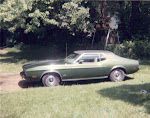This is just the kind of challenge that should get locals brainstorming! Let’s see, there are different kinds of landmarks: impressive practical structures (Sears Tower), impressive structures designed for the sole purpose of attracting tourists (the arch), giant statues designed to get people to leave the highway and at least stop to take a picture (I don’t remember the names of the towns, but I’ve seen a giant bear in a southern Wisconsin town and a giant cow in some town in northeastern Illinois), and places that are just so wonderful that they become destinations for travelers (zoos, water parks, all those venues in Branson). Ok, which type of landmark do we want in Normal?
Impressive practical structure: a very high bridge (with lanes for vehicles, pedestrians, and bicyclists) that spans Normal and Bloomington from north to south with NO STOPS . . .
Impressive tourist-attracting structure: a huge fan that spins in the wind . . .
Giant statue: a giant insurance claim form; a giant drive-through speaker; a giant mortarboard with tassel; a HUGE Asian beetle . . .
Wonderful place: a real, working dairy farm surrounded by shops, restaurants, and residences ("Get Moo for Your Money! Visit the Divine Bovine Sanctuary! Just off Veteran's Parkway!")
Anyone have other ideas? Better hurry because the cost will have to be added to the next budget!






